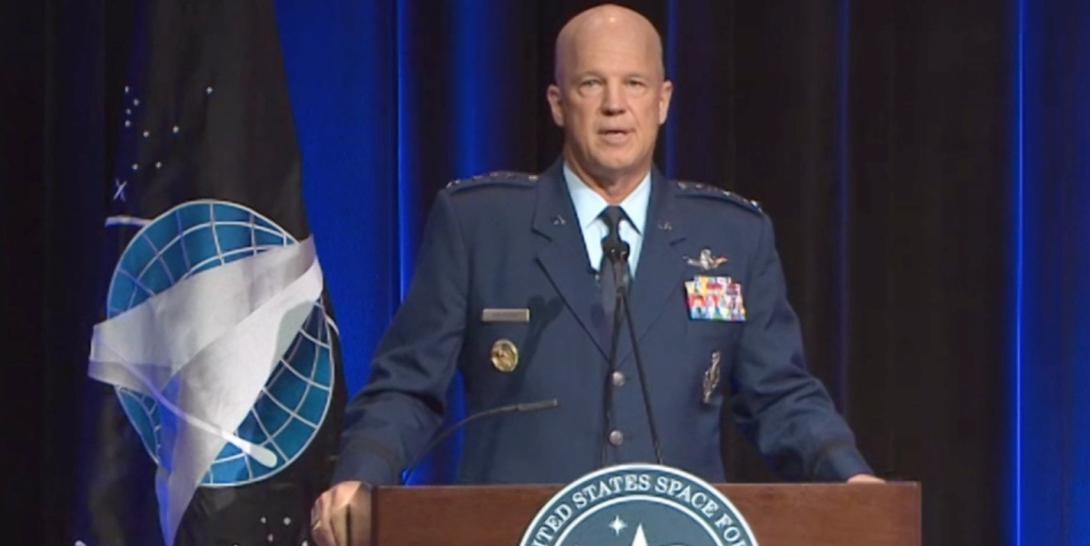Space Force Pursues Digital Makeup
With space a contested domain, the U.S. military’s newest service, the Space Force, must be bold and faster in its operations, reports Gen. John “Jay” Raymond, USSF, chief of Space of Operations, U.S. Space Force.
The leader, who is responsible for organizing, training and equipping the service’s space force as well as providing space-based capabilities, is spearheading a digital-based vision for the service. Part of this new force design is making sure that electronic- and computing-based capabilities underpin its structure.
For Gen. Raymond, that means ushering in a digital workforce, a digital headquarters and digital engineering, he said, speaking Tuesday at the Air Force Association’s annual meeting, held virtually. “In order to outpace our adversaries in space, the U.S. Space Force intends on being a digital service from the ground up,” the general noted.
To have its own organic computer expertise inside the Space Force, Gen. Raymond is bringing in 50 software coders this year and after that will continue to expand coding capabilities.
“In addition, to increase the digital fluency of the entire force, we have issued 6,000 licenses to Digital University,” he shared. “Our expectation is that all Space Force members will speak a second language. And that language is digital.”
Another early success of the Space Force’s digital pursuit is the so-called Kobayashi Maru effort—named after the fictional Starfleet academy from the Star Trek television program that centered on having cadets face incredibly difficult and “seemingly unwinnable” scenarios.
“We have established our Kobayashi Maru software team that is leading the charge on modernizing defense software development with our allies,” Gen. Raymond stated.
Through the Space Force’s chief data officer, Mark Brady, the service is pursuing next-generation data management. This comprehensive administration will encompass all of its data across sources, functions, users, storage and analysis and decision making. It builds on previous methods, provides uniform terminology and a coherent platform. And the effort is governed by a council.
“The work we are doing to build a unified data library will serve as the foundation for Joint All Domain Command and Control,” Gen. Raymond noted.
In addition, the Space Force is building on the international partnerships already formed through the work of the Space and Missile Systems Center when it was part of the Air Force. The new service will move from a model of “one-way data sharing” with its partners, to developing operational capabilities together, the general stated.
“Historically we’ve not had the same partnerships with our allies in space that we’ve had in other domains,” he emphasized. “This has to change. And I’m pleased to report that it is.”
The Space Force has established a new Chief Partnership Office at the Space and Missile Systems Center (SMC), headed up by Deanna Ryals to grow its partnerships with Australia, Canada, Japan, New Zealand, United Kingdom, France and Germany. For the last several years, the SMC has been working with Norway and Japan, in particular, to expand space-based solutions. Norway is hosting two American payloads, the general said, which will reportedly save the military $900 million and deliver tools three years sooner. With Japan, the service is partnering to have a space situational awareness payload launched when that country sends up its GPS augmentation satellite.
“In order to be ready for the conflict, we must be bold… and move faster,” Gen. Raymond said.





Comments